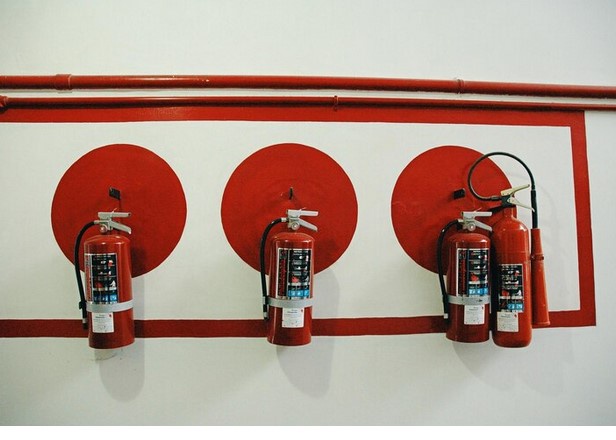Introduction
Fire safety is a crucial consideration for any building owner or manager, especially in commercial and industrial settings where the risk of fire can have devastating consequences. Fire sprinkler systems are widely recognized as one of the most effective means of fire protection. However, many building owners may hesitate due to concerns about the cost of installation. In this blog post, we'll explore the cost of installing fire sprinklers, examine the factors influencing these costs, and determine whether this investment is worthwhile in terms of safety, property protection, and peace of mind.
Understanding Fire Sprinkler Systems
Before discussing costs, it's essential to understand what fire sprinkler systems are and how they function. Fire sprinkler systems consist of a network of pipes, water supply, and sprinkler heads installed throughout a building. These systems automatically discharge water when they detect a certain level of heat, helping to suppress or extinguish fires rapidly.
Factors Influencing Installation Costs
The cost of installing fire sprinklers can vary widely depending on several factors:
Building Size and Layout: The size and layout of the building influence the complexity of the sprinkler system design and installation. Larger buildings with multiple floors or compartments may require more extensive systems, impacting costs.
System Design: The design of the sprinkler system, including the type of sprinkler heads, pipe materials, and water supply requirements, can affect installation costs. Certain building configurations or occupancy types may necessitate specific design considerations.
Water Supply and Pressure: The availability and adequacy of the water supply and pressure in the building also impact installation costs. In some cases, modifications or upgrades to the water supply system may be necessary to support a fire sprinkler system.
Building Codes and Regulations: Compliance with local building codes and fire safety regulations can influence the design and installation of fire sprinkler systems. Meeting these requirements may involve additional costs for permits, inspections, and compliance documentation.
Type of Sprinkler System: Different types of fire sprinkler systems exist, including wet pipe, dry pipe, pre-action, and deluge systems. The choice of system type depends on the building's occupancy, fire hazards, and environmental conditions, which can affect costs.
Accessibility and Installation Conditions: The accessibility of installation areas within the building, such as ceilings and walls, can impact installation complexity and labor costs. Factors like building occupancy and working hours may also affect installation logistics.
Cost Breakdown of Fire Sprinkler Installation
While costs can vary significantly based on the factors mentioned above, here is a general breakdown of the expenses associated with fire sprinkler installation
Design and Engineering: This phase involves the development of a detailed sprinkler system design tailored to the building's requirements and compliance with regulations. Design and engineering costs typically range from 5% to 10% of the total installation cost.
Materials and Equipment: The cost of materials and equipment includes sprinkler heads, pipes, fittings, valves, water pumps (if needed), and backflow preventers. Material costs can constitute approximately 40% to 60% of the total installation cost.
Labor Costs: Labor expenses cover the installation of the sprinkler system, including piping, fittings, sprinkler head placement, and connection to the water supply. Labor costs account for about 30% to 50% of the total installation cost.
Additional Costs: Additional expenses may include permit fees, inspection fees, testing, and commissioning of the system to ensure proper functionality and compliance.
Is It Worth the Investment
Now, the crucial question: Is installing fire sprinklers worth the investment? Let's consider the benefits
Enhanced Fire Protection: Fire sprinkler systems provide active, automatic fire protection, significantly reducing the risk of fire-related injuries, fatalities, and property damage. They can suppress or extinguish fires in their early stages, minimizing the spread and impact of the fire.
Property Protection and Damage Mitigation: Fire sprinklers can protect valuable assets, equipment, inventory, and structural components of the building. The cost of replacing or repairing fire-damaged property far exceeds the initial investment in sprinkler installation.
Potential Insurance Premium Reductions: Many insurance providers offer premium discounts for buildings equipped with fire sprinkler systems due to their proven effectiveness in reducing fire risks. These savings can offset installation costs over time.
Compliance with Regulations: Installing fire sprinklers ensures compliance with local building codes and fire safety regulations, avoiding penalties and legal liabilities associated with non-compliance.
Peace of Mind and Safety: Above all, fire sprinkler systems provide peace of mind knowing that you have taken proactive measures to protect occupants, employees, visitors, and tenants from fire emergencies.
Conclusion
while the upfront cost of installing fire sprinklers may seem significant, the long-term benefits far outweigh the investment. Fire sprinkler systems offer unparalleled fire protection, property preservation, and safety assurance, making them a worthwhile investment for any commercial or industrial building owner. Prioritize fire safety by considering the installation of a fire sprinkler system tailored to your building's needs and specifications.
Remember, fire safety is a collective responsibility, and investing in preventive measures like fire sprinklers is key to safeguarding lives and property against the devastating impact of fires.


No comments yet